Deities
Our temple is home to various deities, each with their own unique significance.
Below, you can explore the images and description of each deity we reserve.
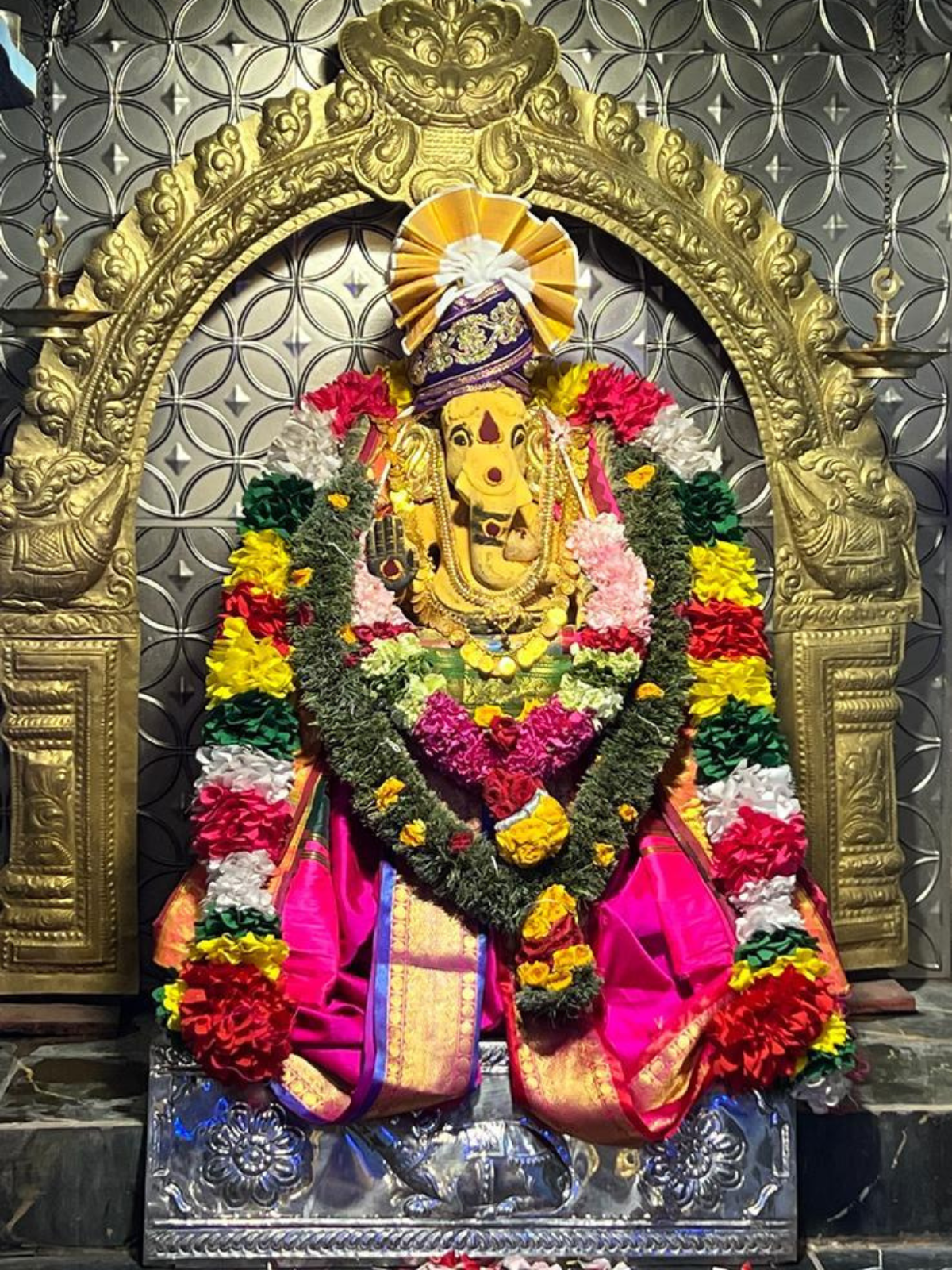
Lord Ganapathy
Lord Ganapathi also known as Ganesha, a prominent figure in Hinduism, is easily recognized by his elephant head and is revered as the remover of obstacles, the god of beginnings, and the patron of intellectuals and writers. He is depicted four arms bearing one with an axe to cut off attachments, one with a rope to pull a person towards the highest goal, one with a sweet to reward those who live a life of spiritual discipline, and one held with the palm out to give blessings and protect those on the path of spirituality and often riding a mouse. Ganesha is worshipped before any major undertaking and is believed to bring good luck and prosperity.

Lord Shiva
Lord Shiva also known as Shankar is a central deity in Hinduism, considered part of the holy trinity (Trimurti) with Brahma and Vishnu. He is the destroyer and restorer, the great ascetic, and the symbol of both sensuality and benevolence. Shiva is also associated with Time and is seen as both the destroyer and creator of the universe. His loyal companion is Nandi, a powerful bull. Lord Shiva is the consort of Goddess Parvati, while she is considered to the be the Shakti with him. Lord Shiva is the father of Lord Karthikeya and Lord Ganesha.

Jal Dhara Shiva
Second Idol of Lord Shiva placed in the temple dedicated to the devotees to be able to pour only permitted items mentioned below.

Goddess Parvati
Goddess Parvati also known as Gauri is a central figure in Hinduism, revered as the consort of Lord Shiva and a manifestation of the divine feminine power, Shakti. She is the goddess of love, fertility, and devotion, embodying both the nurturing and the powerful aspects of the divine. Parvati the daughter of the Himalayas, representing the connection between the divine and the natural world. Shiva is the consort of Goddess Parvati, while she is considered to the be the Shakti with him. Goddess Parvati is the mother of Lord Karthikeya and Lord Ganesha.

Lord Karthikeya
Lord Kartikeya, also known as Murugan or Skanda, is a prominent Hindu deity, particularly in South India, known as the God of War. He is the son of Shiva and Parvati, and the older brother of Ganesha. Kartikeya is often depicted as a youthful, handsome god, riding a peacock and wielding a divine spear (the vel). He is married and has two wives Valli and Devasani.

Lord Vishnu
Lord Vishnu also known as Narayan is a central figure in Hinduism, particularly within the Vaishnavism tradition, considered the supreme deity, the preserver of the universe, and the protector of dharma (righteousness). He is one of the three primary deities in the Trimurti, alongside Brahma (the creator) and Shiva (the destroyer). Vishnu is often depicted as a blue-skinned man with four arms, sometimes reclining on the serpent Sheshnag or standing on a lotus flower. He is the consort of Goddess Lakshmi.
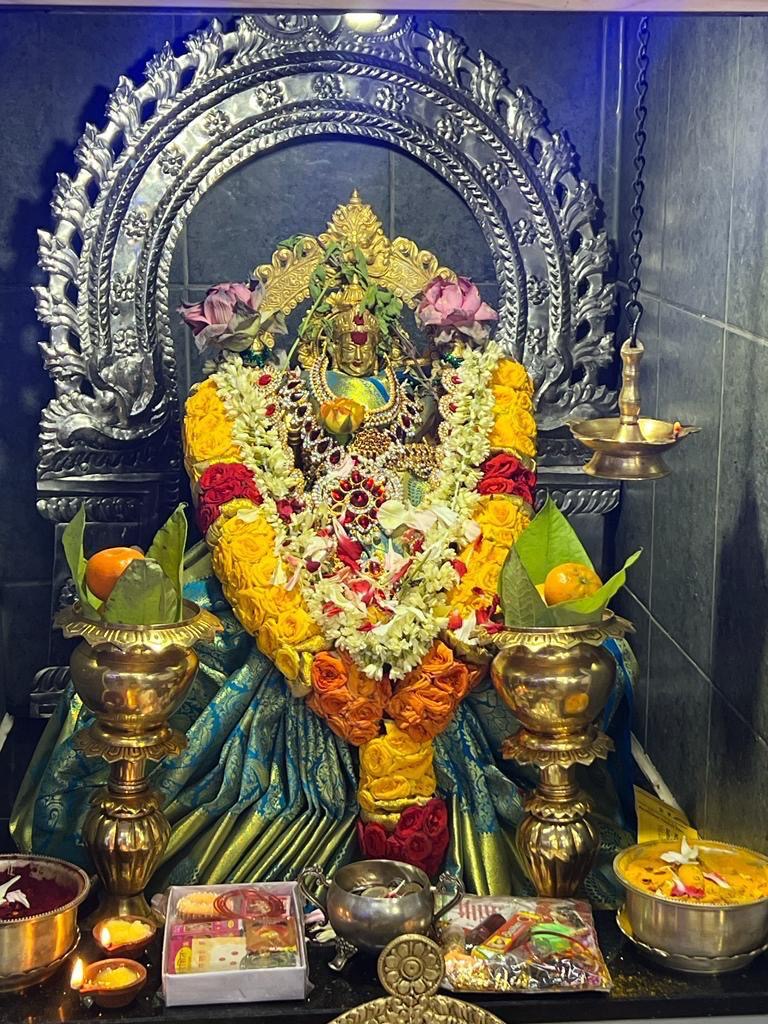
Goddess Lakshmi
Goddess Lakshmi is the Hindu deity of wealth, good fortune, beauty, and abundance, often depicted sitting on a lotus flower and sometimes accompanied by elephants pouring water over her. She embodies prosperity and is a central figure in Hindu mythology, representing both material and spiritual wealth. Lakshmi is the consort of Lord Vishnu and is revered for her role in sustaining the universe.
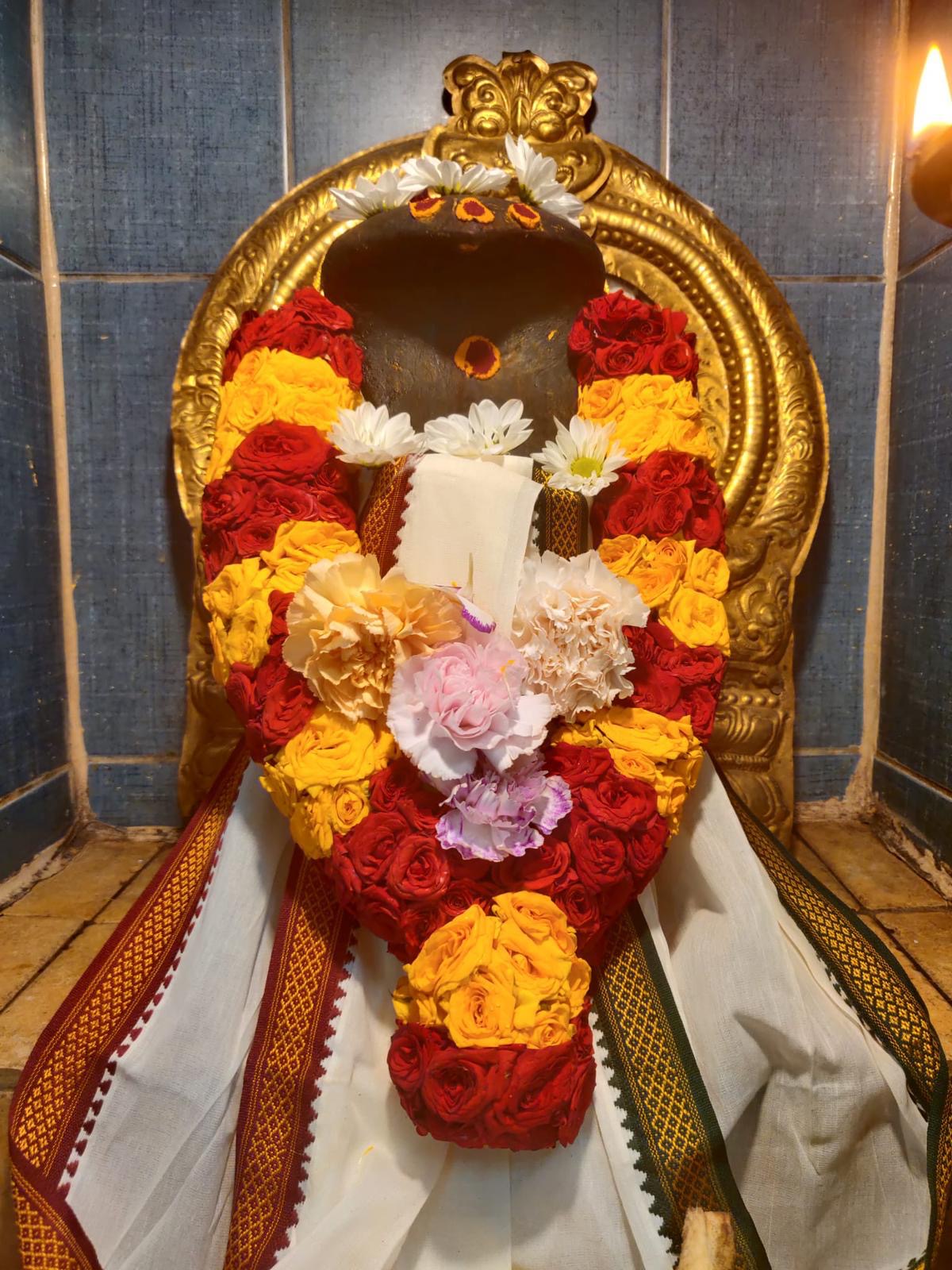
Lord Nagaraja
Lord Nagaraja, or the King of Nagas, is a significant figure in Hindu and Buddhist mythology, representing the divine or semi-divine serpent beings residing in the netherworld. Nagas is often depicted as half-human, half-serpent beings, capable of taking human form, and are associated with fertility, water, and the life-giving powers of rain. They are revered as protectors of treasures and are often depicted in art as having a halo of cobra hoods behind their heads.
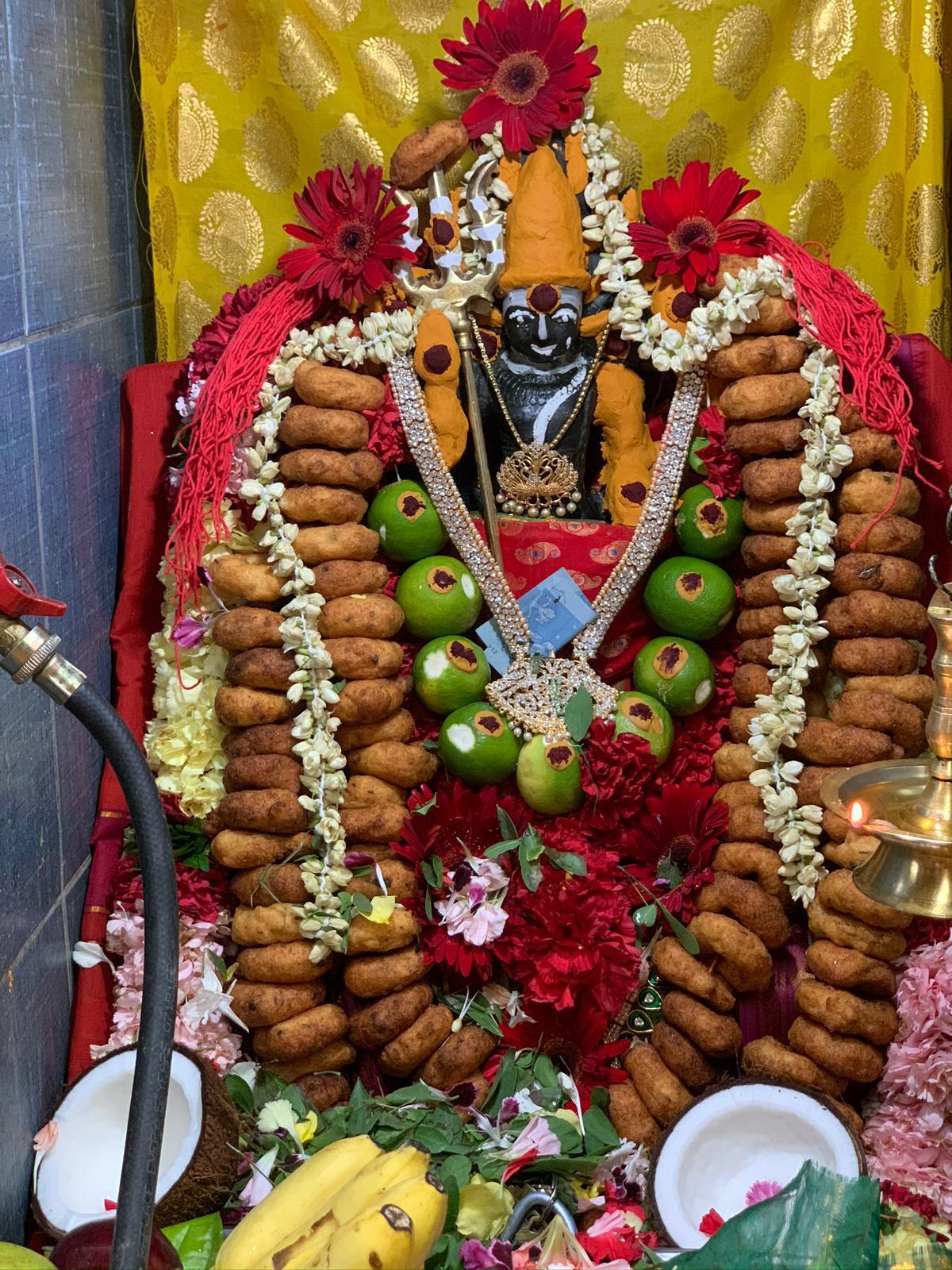
Lord Kaal Bhairav
Lord Kaal Bhairava is a fearsome but benevolent deity, a fierce manifestation of Lord Shiva, and the protector of Kashi (Varanasi) city in India. He is depicted with a dark complexion, often adorned with skulls, a serpent, and a black dog as his vahana. As per Hindu mythology he is known to have cut Lord Brahma’s fifth head with his ring fingernail. Kaal Bhairava is known for his swift justice, his power to control the cycle of life and death, and his ability to dispel fear and negativity. If Maa Kaali is the shakti, he is the Shiva with her.

Sai Baba
Shirdi Sai Baba was a revered Indian spiritual master known for his saintly nature and ability to connect with people of all faiths. He is considered a saint and is worshipped as a divine figure. He emphasized the importance of love, forgiveness, and service to others, and his teachings centered on the universal religion of love. Sai Baba’s followers are drawn to his miraculous abilities, his teachings, and his ability to help them on their spiritual paths.
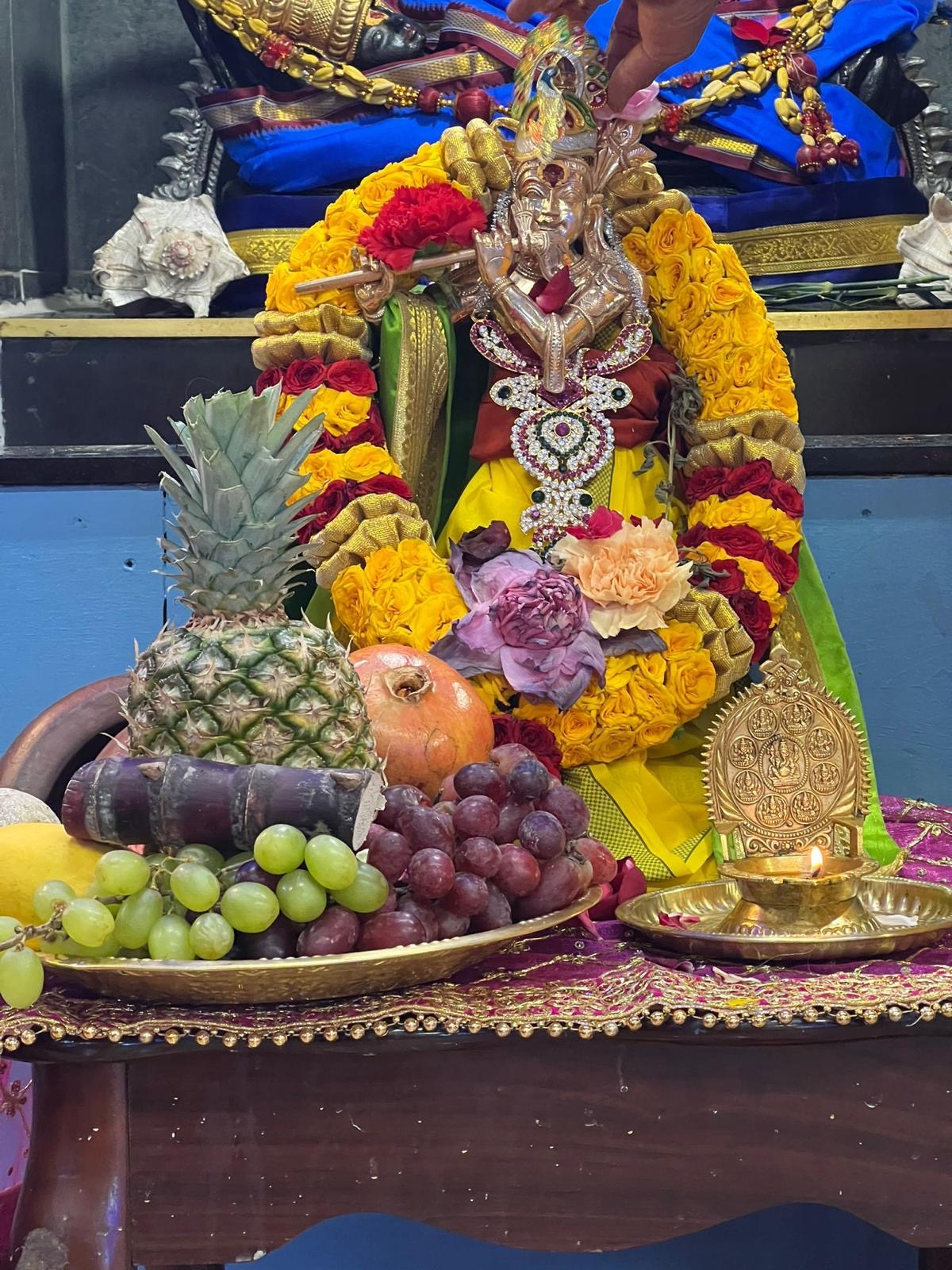
Lord Krishna
Lord Krishna also known as Vasudeva is a central deity in Hinduism, revered as the eighth avatar of Vishnu and worshipped as the Supreme God in his own right. He is known as the god of love, compassion, and protection, often depicted with dark blue skin. Lord Krishna is known for holding the sudharshan chakra in his right hand. Lord Krishna has a pivotal role as the charioteer of Arjuna in the Mahabharata, where he delivers the Bhagavad Gita.
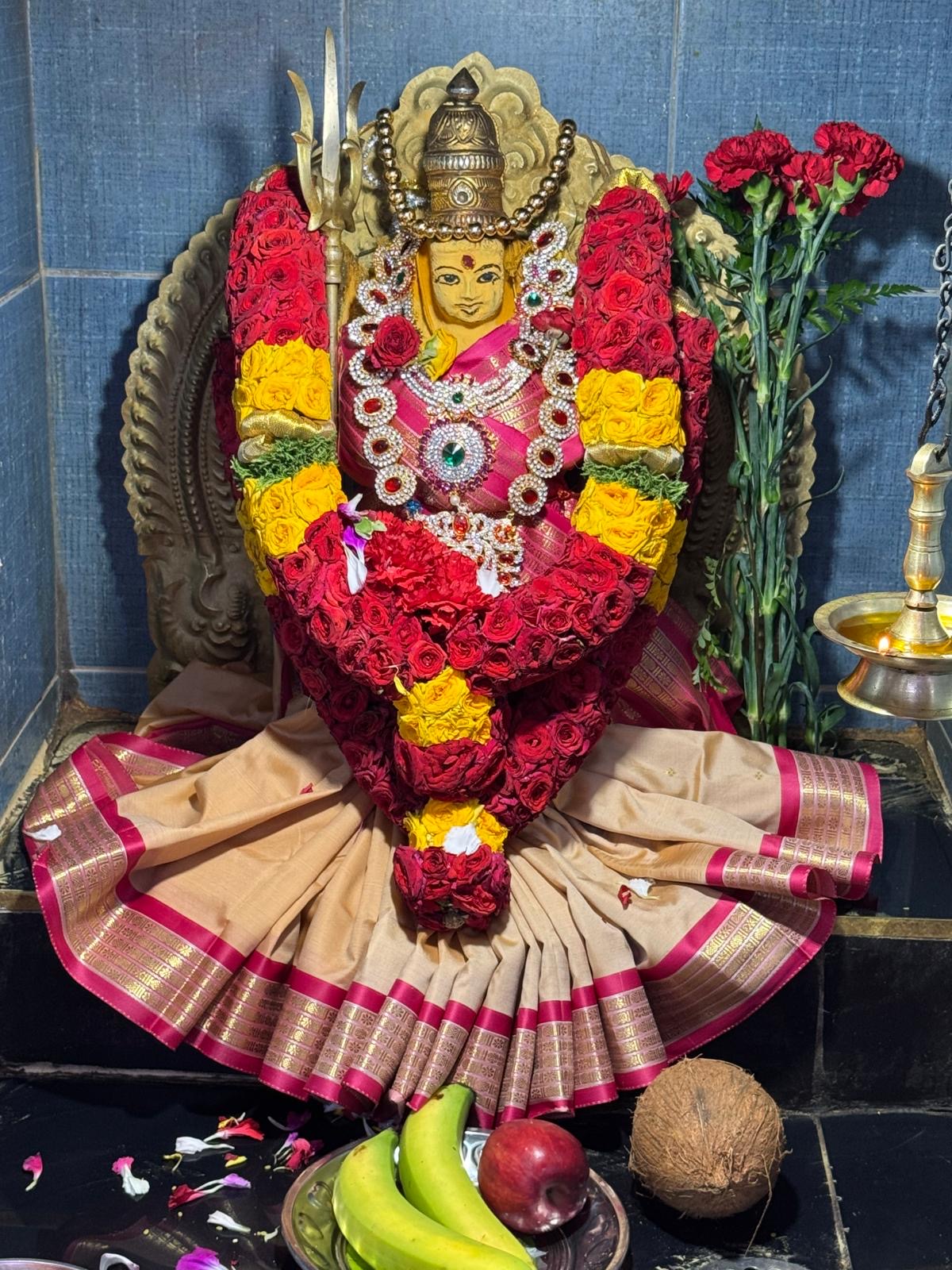
Goddess Durga
Goddess Durga is a prominent form of the supreme Goddess in Hinduism, also known as Devi and Shakti. She is a warrior goddess, often depicted riding a lion or tiger and wielding weapons in her multiple arms. Durga is revered for her strength and ability to defeat evil, particularly the demon Mahishasura. She is worshipped specially during Chaitra Navratri (Spring) and Shardha Navratri (Fall).
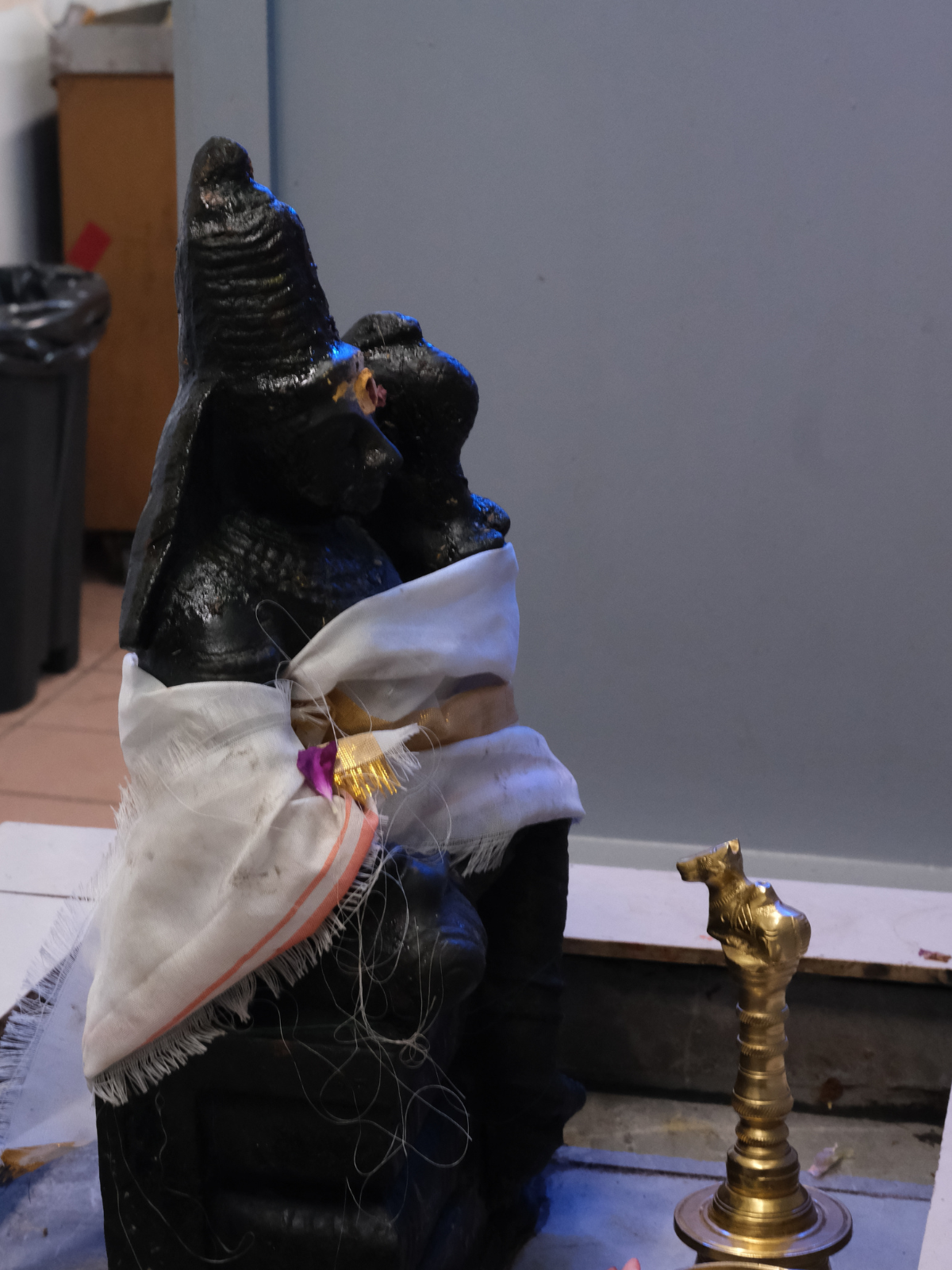
Lord Chandikeshwar
Lord Chandikeshwar is a significant figure in Shaiva temples in South India, particularly in the Shaiva tradition of Hinduism. He is revered as a Nayanar, a revered saint, and is often depicted as a boy with entwined locks of hair, holding an axe and standing with his hands in prayer position. In temple complexes, he is typically found in the first enclosure, to the north-east of the lingam, and is shown seated, often in meditation.

Lord Hanuman
Lord Hanuman is a prominent figure in Hindu mythology, depicted as a monkey-faced, half-human deity He is renowned for his unwavering devotion to Lord Rama, his extraordinary strength, and his selfless service in assisting Lord Rama and Mata Sita. He is considered a symbol of courage, loyalty, and devotion. Lord Hanuman is also the tenth avatar of Lord Shiva. As per Hindu mythology he assisted Lord Shani escape from captivity while he set the kingdom of Ravana on fire.
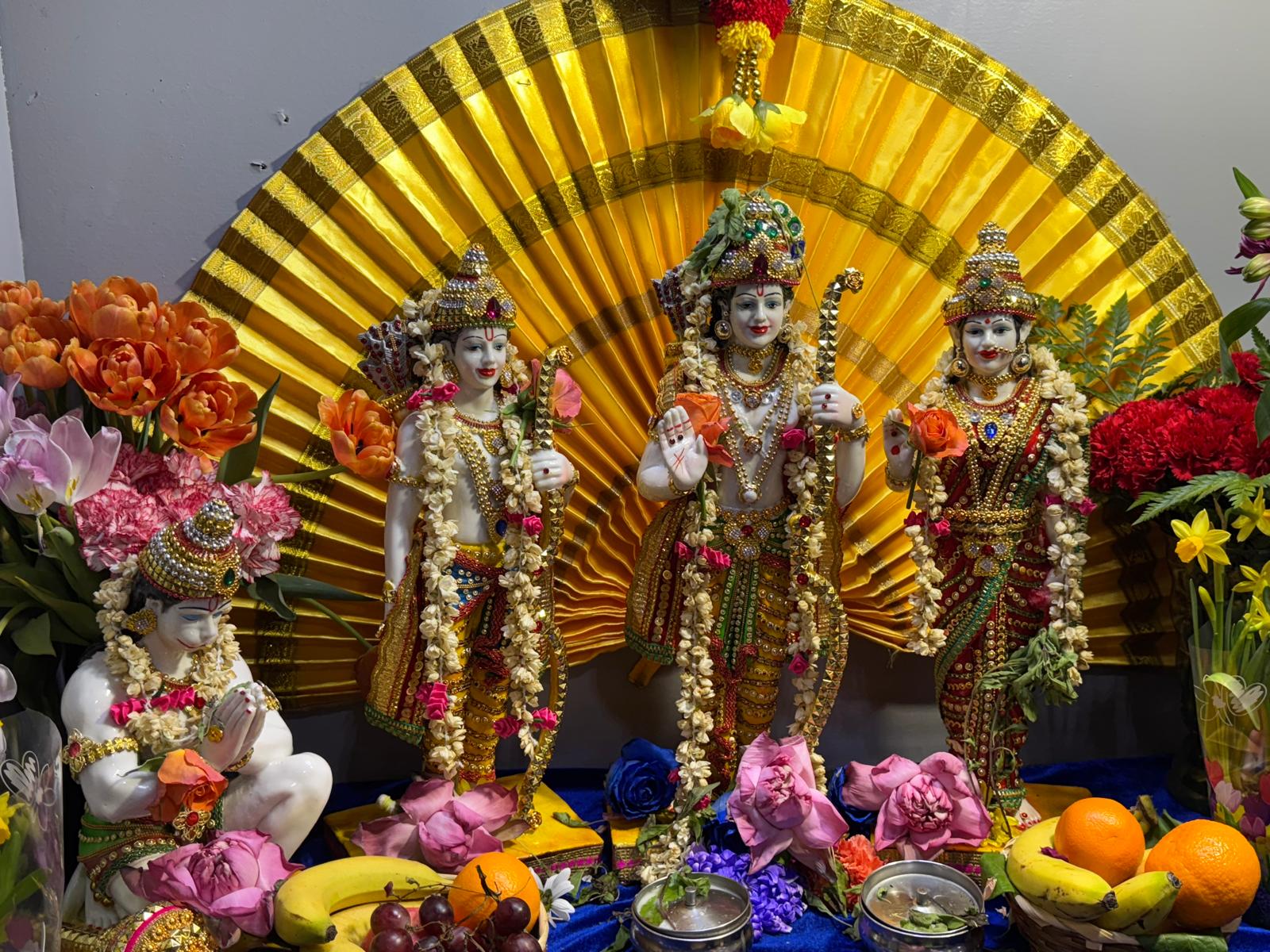
Lord Rama
Lord Rama is a central figure in Hinduism, revered as an ideal man and an avatar of Vishnu. He is known for his virtues, courage, and unwavering devotion to dharma (righteousness and duty). Lord Rama is often depicted as blue-skinned or green, with princely adornments and a kirita-makuta (tall conical cap). He is frequently shown with his wife Mata Sita, his brother Lakshman who is the human form of Sheshnag, and his devoted ally Lord Hanuman.
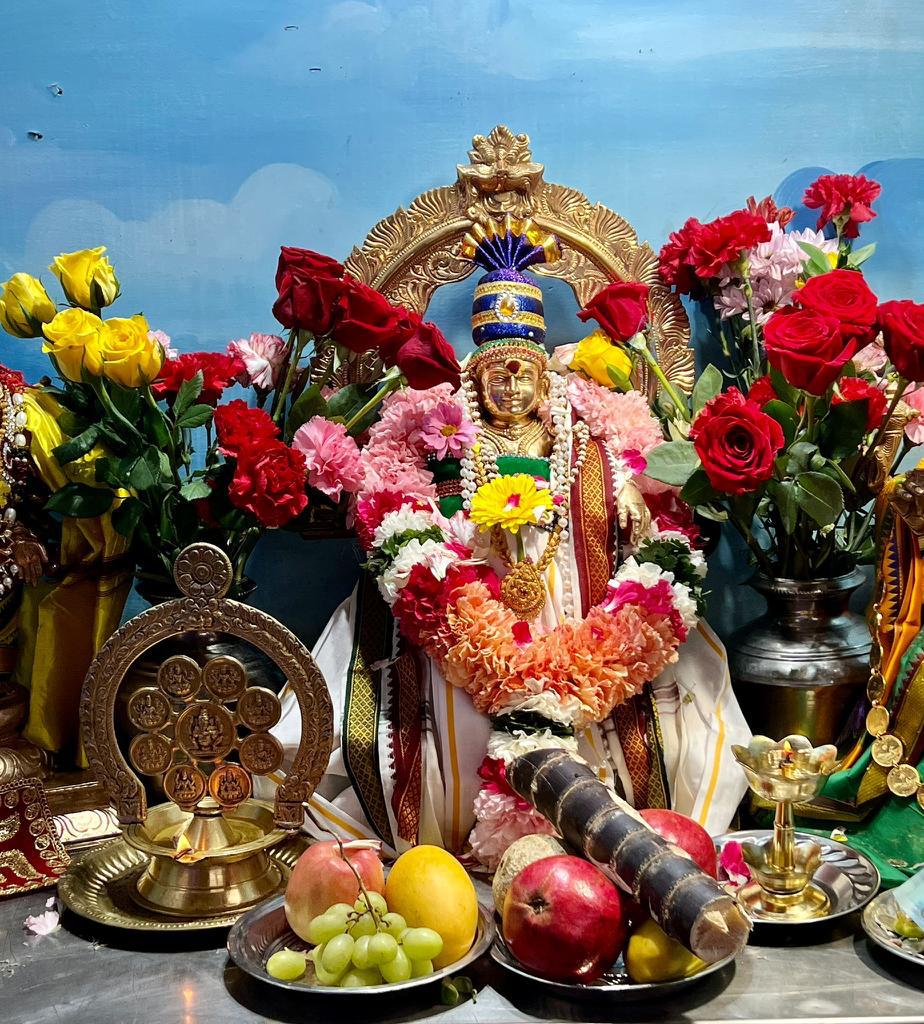
Lord Ayyappa
According to Hindu theology, he is described as the son of Shiva and Mohini (the female avatar of Vishnu), thus representing a bridge between Shaivism and Vaishnavism. Ayyappan is a warrior deity and is revered for his ascetic devotion to Dharma, the ethical and right way of living.

Lord Dakshinamurthy
Lord Dakshinamurthy is a revered form of Shiva, depicted as the ultimate guru, or teacher. He is often shown seated under a Banyan tree, facing south, and surrounded by sages, symbolizing the transmission of wisdom. He is considered the embodiment of knowledge and is worshipped for his ability to dispel ignorance.

Goddess Saraswati
Goddess Saraswati is a principal goddess revered as the embodiment of wisdom, knowledge, arts, music, and eloquence. She is often depicted with four arms, each holding a symbolic object, and typically pictured with a swan or goose as her vehicle. Saraswati is also the consort and mind-born daughter of the creator god Brahma.

Lord Nataraja
Lord Nataraja is a depiction of the Hindu god Shiva as the cosmic dancer, performing the Tandava or dance form. Shiva’s dance represents the continuous flow of energy and the dynamic nature of the universe.
• Drum: Beats the rhythm of life and creation.
• Raised Hand: Symbolizes “fear not,” offering protection and reassurance.
• Trampled Dwarf: Represents ignorance and the triumph over it.
• Ring of Fire: Encompasses the universe and Shiva’s flowing hair.
• Right Leg: Stands on the dwarf, signifying the destruction of ignorance.
Navagraha
(9 Planets)
Navagraha (9 Planets)
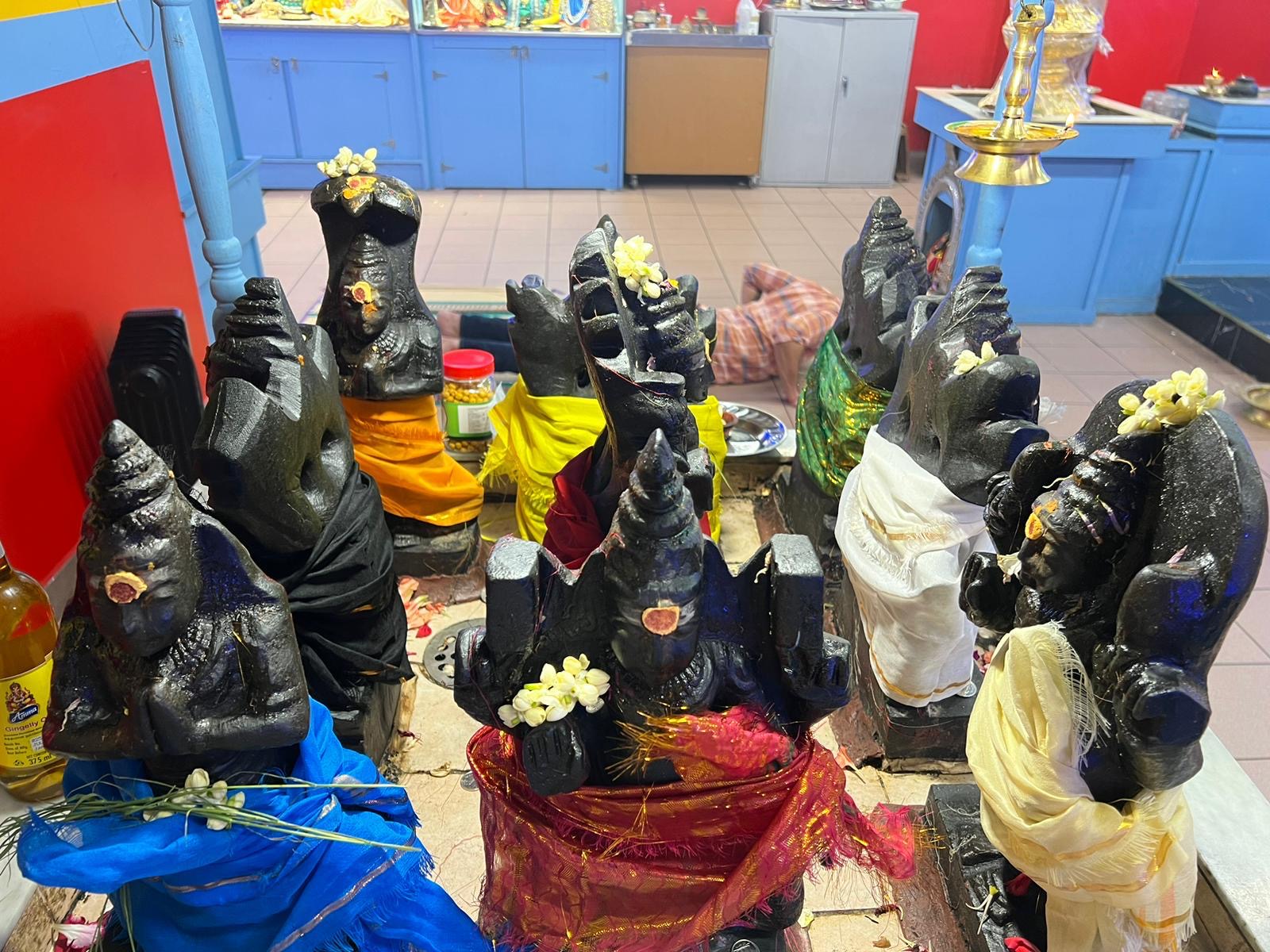
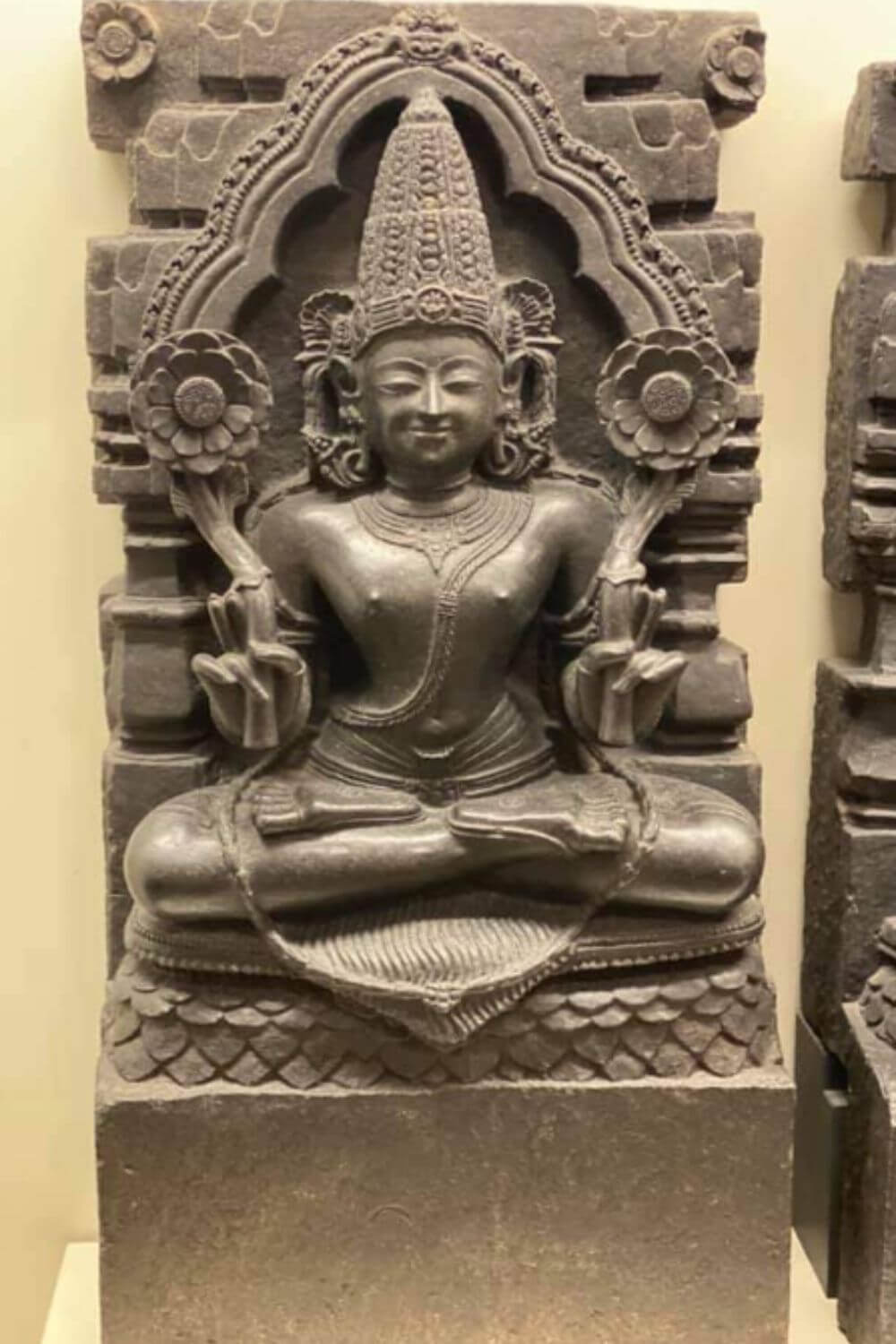
Surya Dev
Surya Dev, the Hindu sun god, is a powerful deity associated with light, brightness, and the life-giving power of the sun. He is often depicted riding a chariot pulled by seven horses, symbolizing the seven colors of the rainbow or the seven chakras. Surya is also considered one of the major five deities in the Smarta tradition and a member of the Navagraha, the nine classical planets in Hindu mythology. Devotees pray to Lord Shiva to reduce Surya Dev dosh or issues.
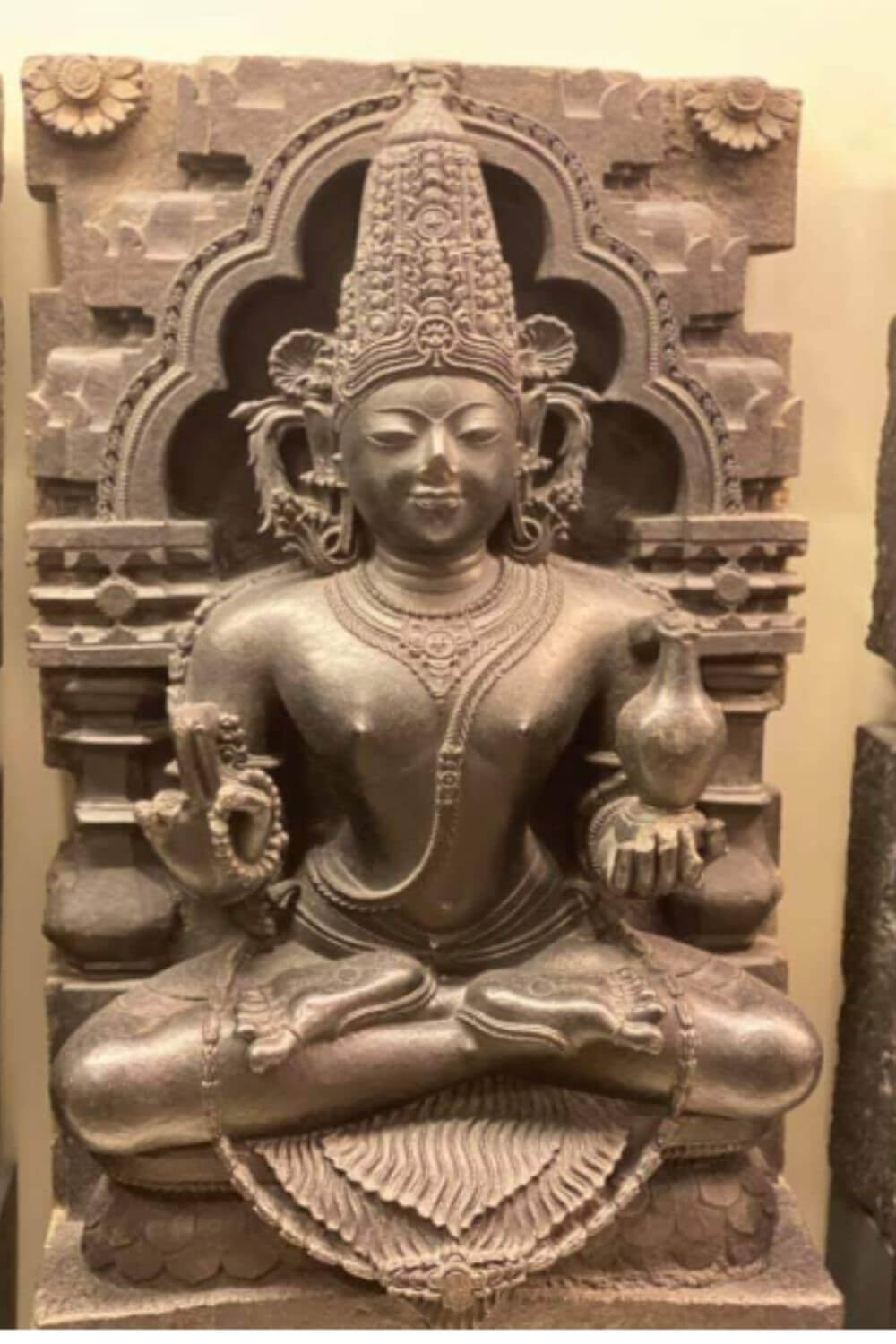
Budha Dev
Budh Dev, or Mercury, is a god associated with intellect, communication, and learning. He is a pivotal figure in the Navagraha, the nine celestial bodies in Hindu astrology, and is often depicted as a youthful deity, sometimes riding a lion or chariot. Budha is also linked to growth, wisdom, and analytical skills. Devotees pray to Lord Vishnu to reduce Budh dosh or issues.
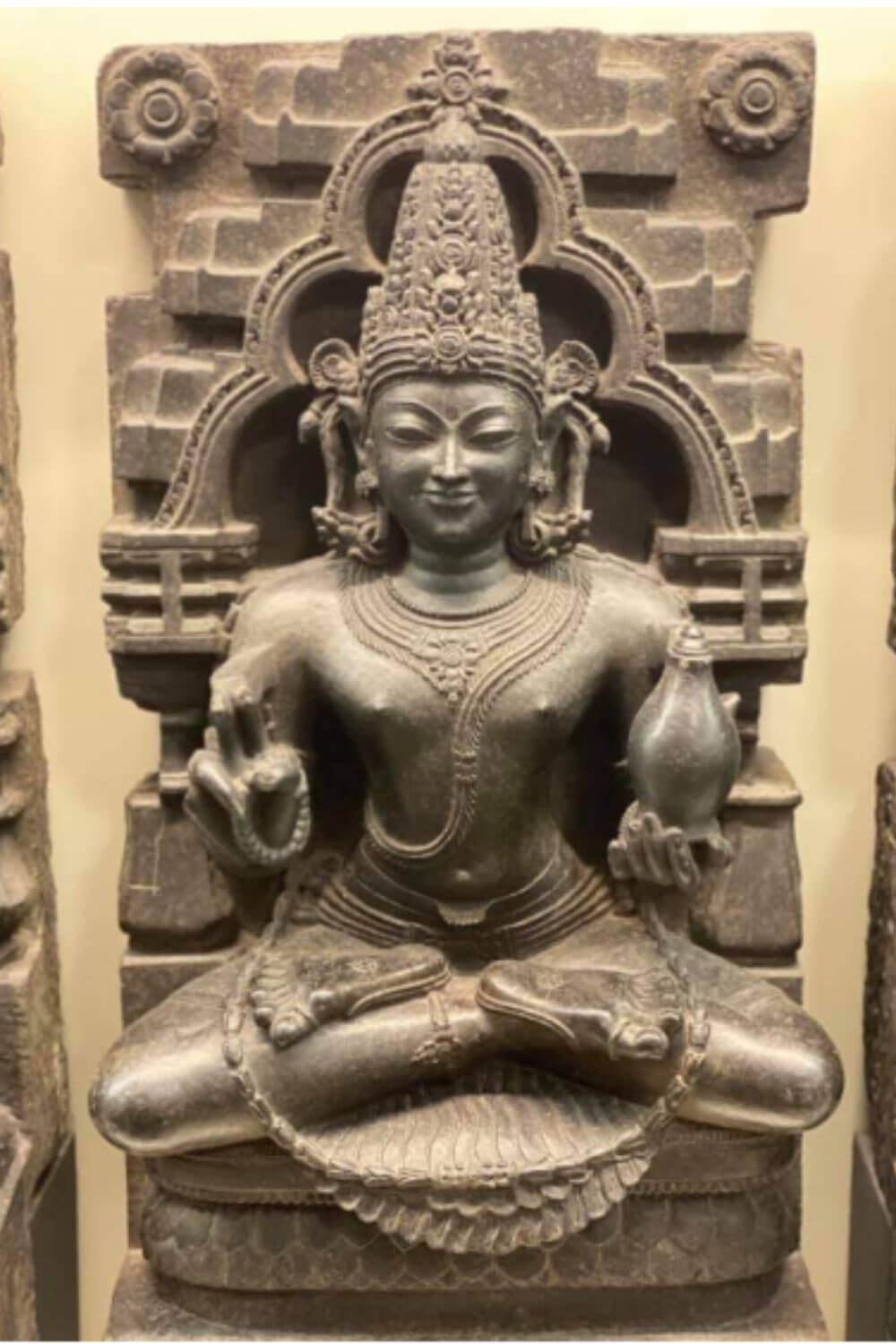
Shani Dev
Shani Dev, the personification of Saturn in Hindu mythology, is revered as the lord of karma, justice, and time. He is often depicted with a dark complexion and is associated with discipline, hardship, and the ultimate dispensation of justice. Shani’s influence in Vedic astrology is linked to lessons of patience, hard work, and perseverance. He tests devotees during the Sade Sati 7.5 years period & Mahadasha period 19 years. Devotees should pray to Hanuman, Kaal Bhairav to reduce Shani dosh or issues.
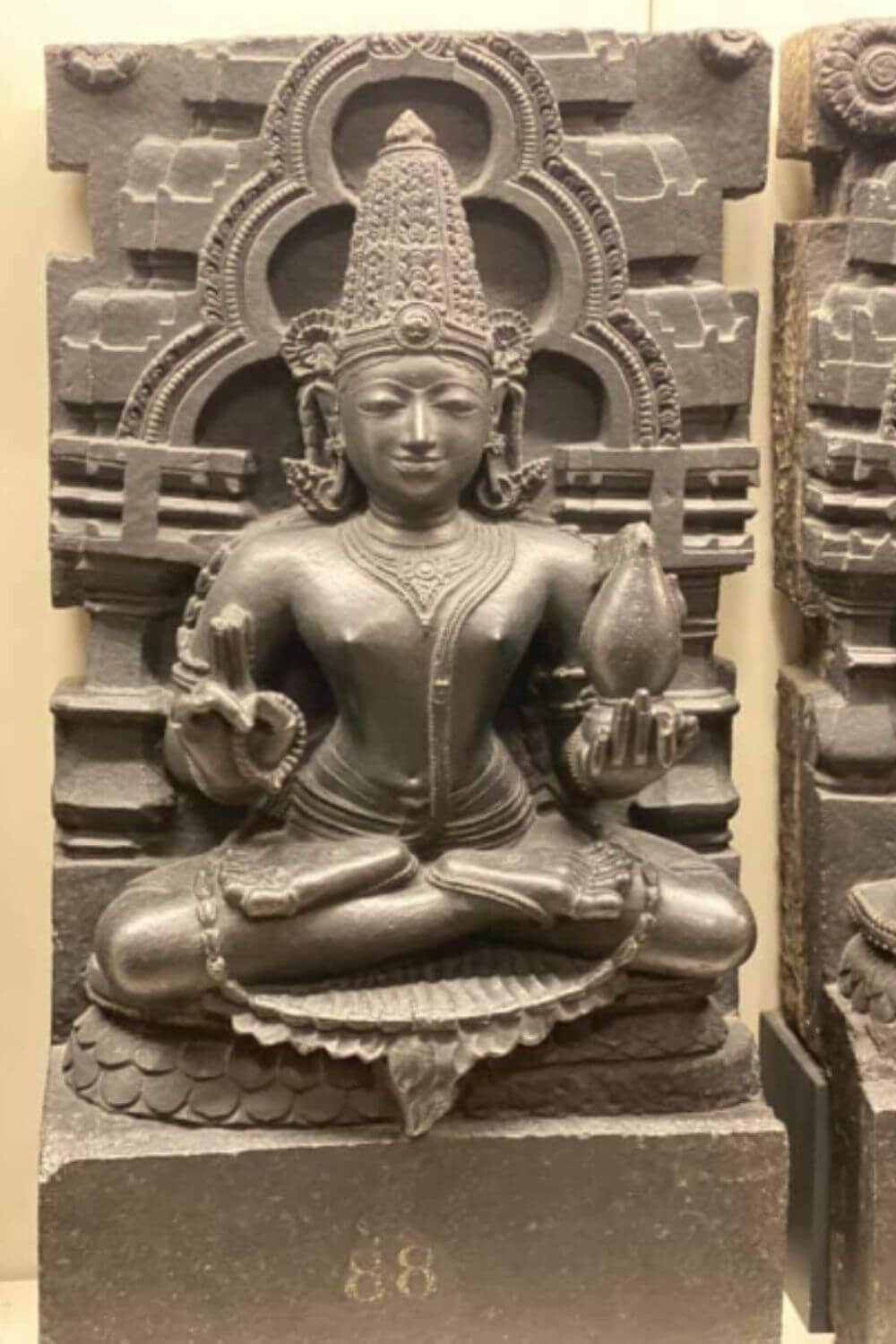
Chandra Dev
Chandra Dev, also known as Soma, is the Hindu god of the Moon, representing the night, plants, and vegetation. He is one of the Navagraha (nine planets) and Dikpala (guardians of the directions). Chandra Dev is associated with beauty, softness, motherly qualities, and the cycle of creation and rebirth represented by the lunar calendar. Devotees pray to Lord Shiva to reduce Chandra Dev dosh or issues.
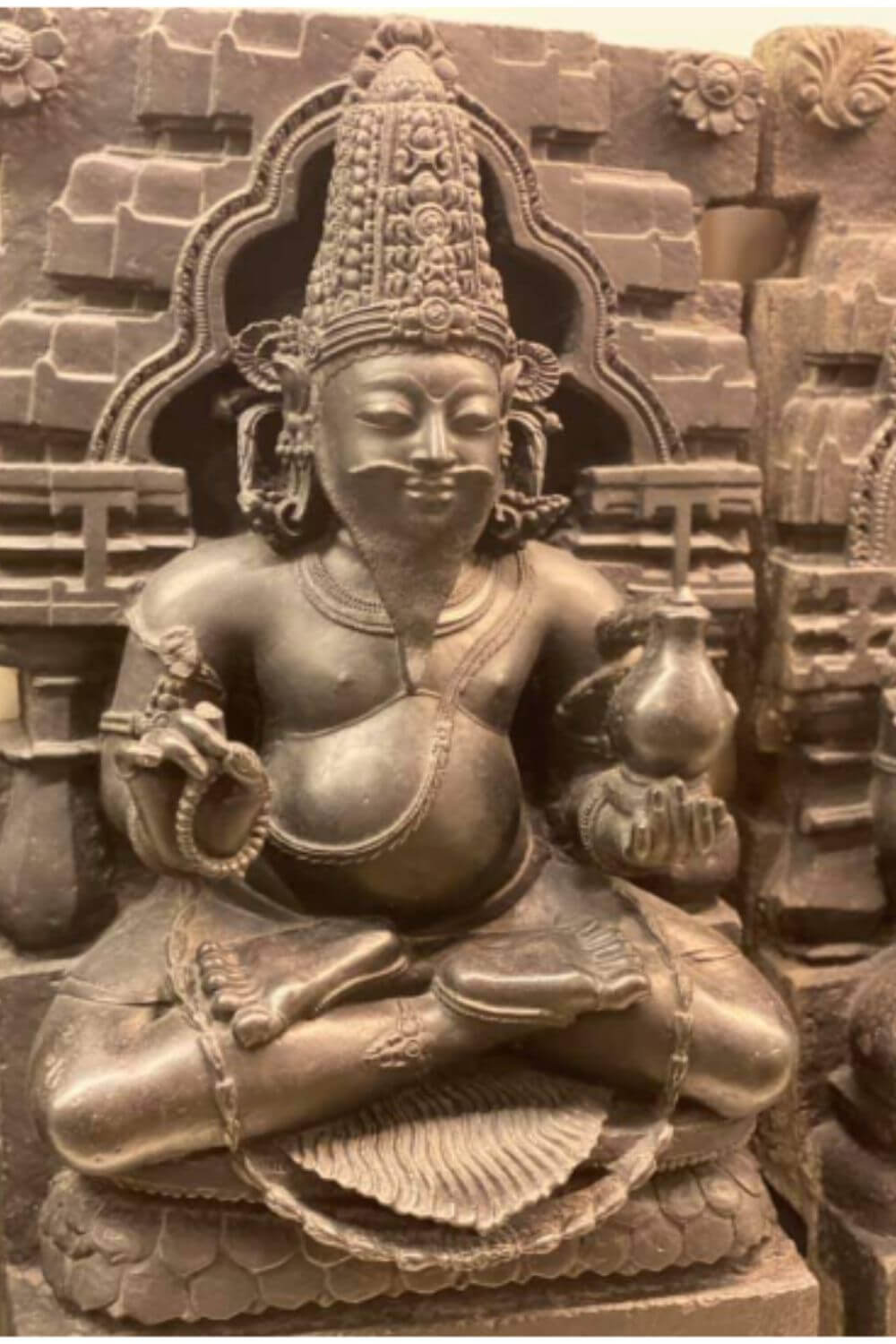
Guru Dev
Guru or Brihaspati, is associated with wisdom, expansion, growth, and good fortune. It represents higher learning, spiritual growth, and ethical conduct, often depicted as a wise teacher or sage guiding towards enlightenment. Jupiter’s influence is also linked to prosperity, generosity, and a broad perspective on life. Devotees pray to Lord Dakshinamurthy to reduce Brihaspati / Guru dosh or issues.
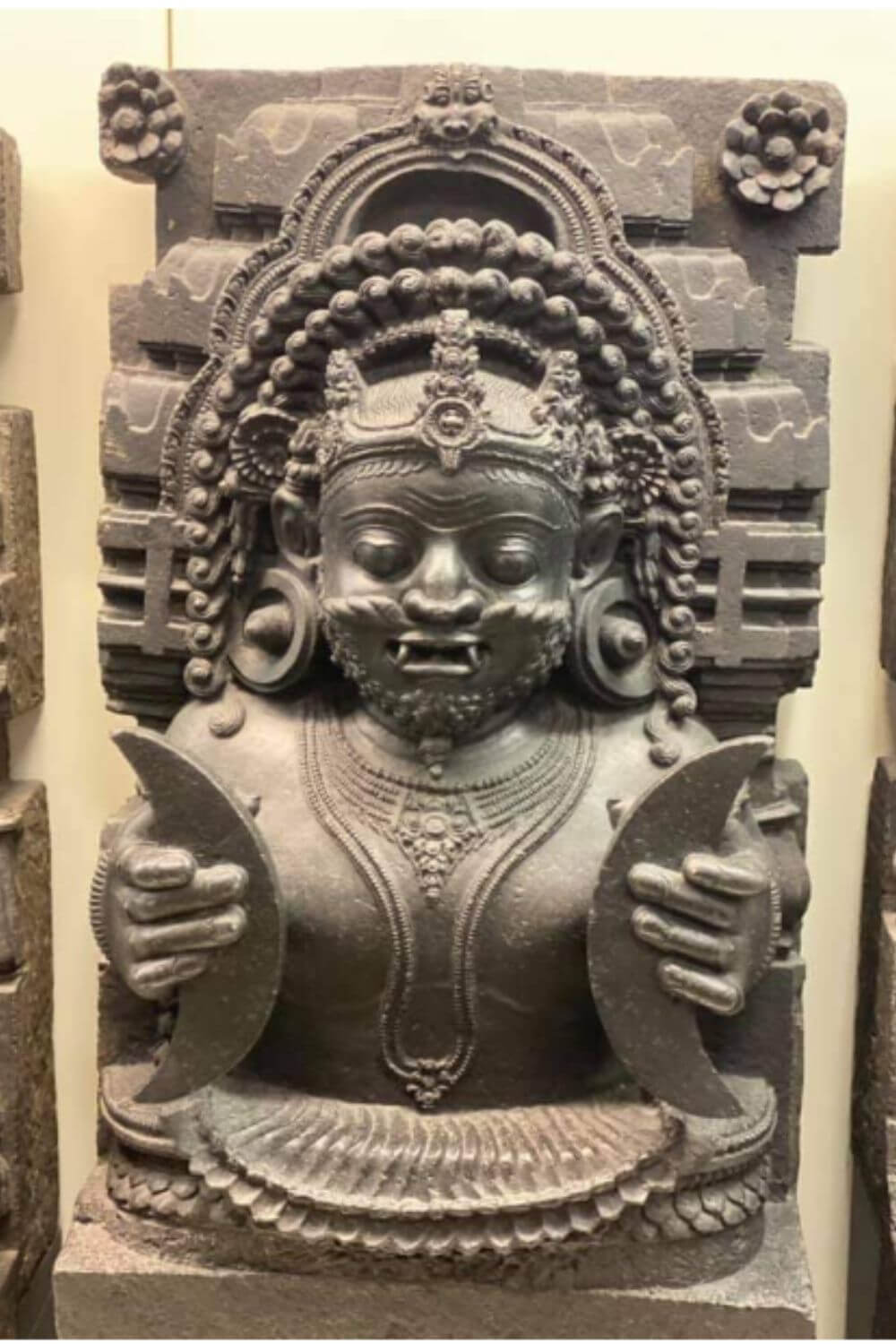
Rahu
Rahu, also known as the North Node of the Moon, represents desires, ambition, and worldly success. It can be associated with both positive outcomes like material gains and negative ones like illusion, confusion, and attachment to material things. Rahu is often seen as a planet that can bring sudden changes and unexpected opportunities but also challenges and setbacks. In Vedic mythology, Rahu and Ketu are the two halves of the demon Svarbhanu, who was beheaded by the god Vishnu for attempting to steal the nectar of immortality. Rahu became the “dragon’s head,” while Ketu became the “dragon’s tail”. Devotees should pray to Lord Shiva or Mata Durga to reduce Rahu dosh or issues.

Mangal Dev
Mangala Dev, also known as Angaraka or Kuja, is the personification of the planet Mars in Hindu mythology. He is the god of anger, aggression, and war, representing courage, energy, and willpower. He is believed to influence a person’s ability to face challenges, pursue goals, and strive for excellence. Devotees pray to Lord Karthikeya and Hanuman to reduce Mangal dosh or issues.
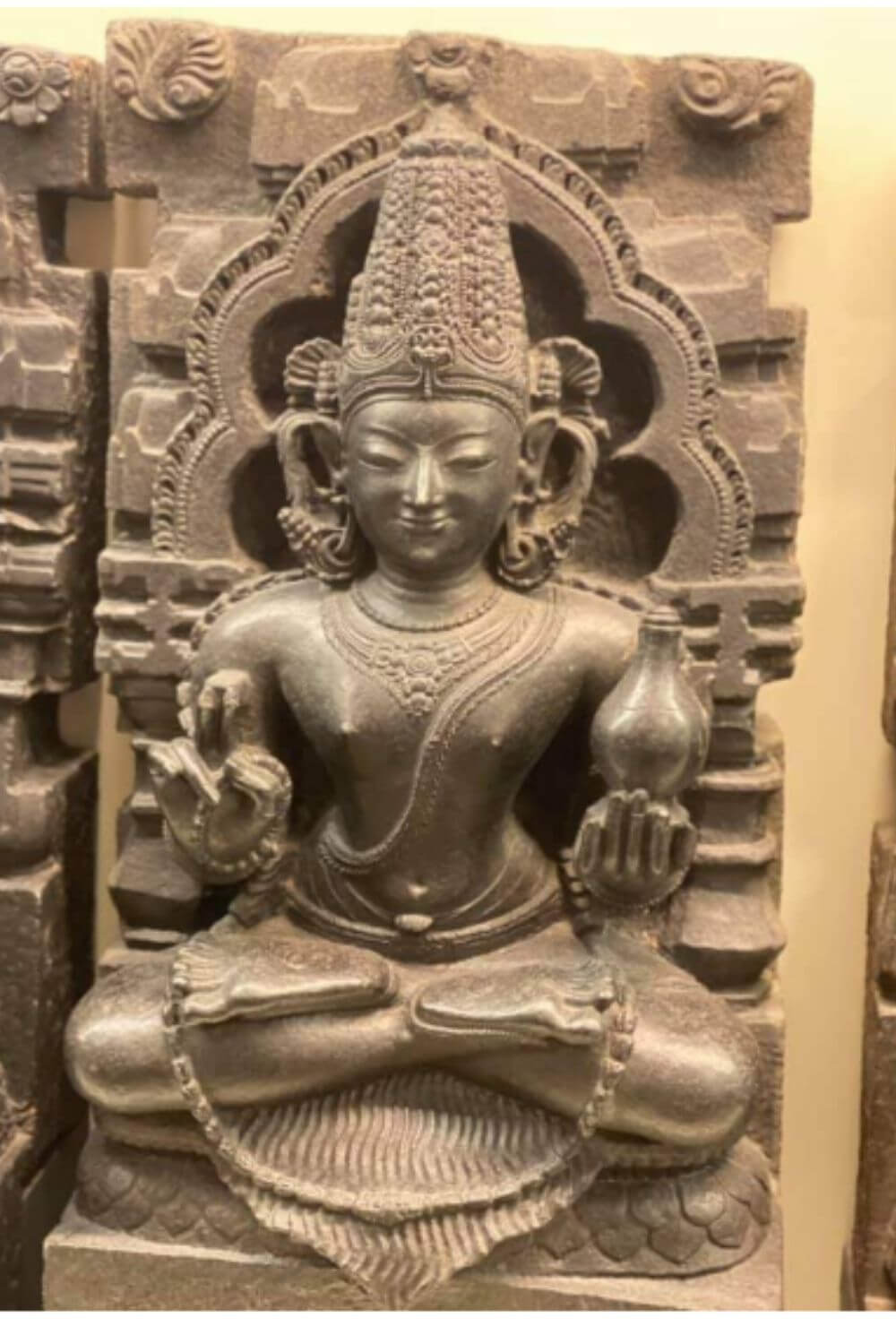
Shukra Dev
Shukra Dev, the deity associated with the planet Venus in Vedic tradition, is described as a figure of immense wisdom, charm, and beauty. He is known as the Guru of the Asuras (demons) and a master of the arts and sciences. Shukra Dev is also associated with the ability to revive the dead through the Sanjeevani Vidya. In Hindu mythology, he is depicted as a sophisticated and graceful figure, often shown riding a white horse or sitting on a lotus.
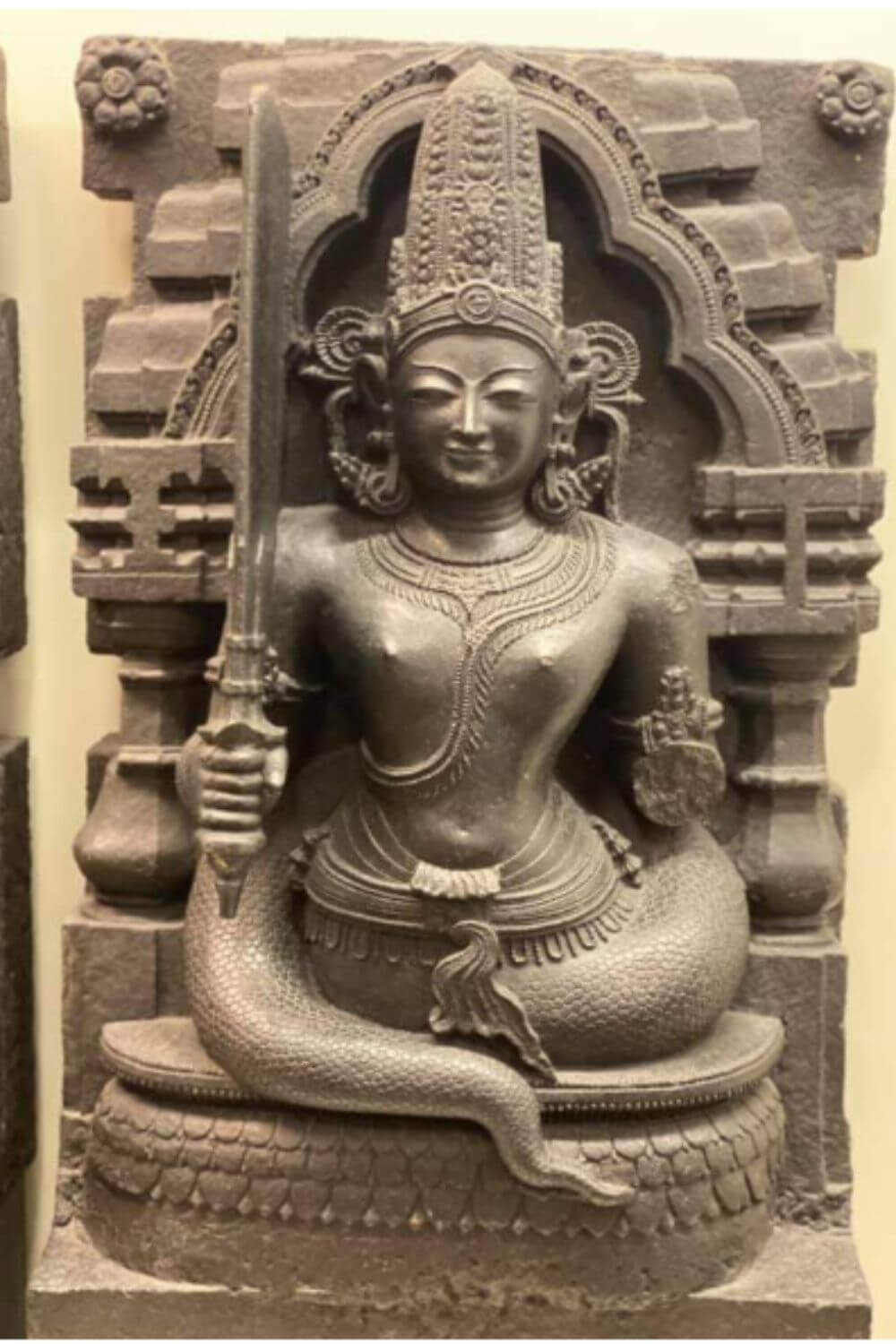
Ketu
Ketu is the south lunar node, also known as the “dragon’s tail.” It represents the point where the Moon’s orbit crosses the ecliptic in the southern hemisphere. Ketu is often associated with detachment, spiritual growth, and karmic lessons. In Vedic mythology, Rahu and Ketu are the two halves of the demon Svarbhanu, who was beheaded by the god Vishnu for attempting to steal the nectar of immortality. Rahu became the “dragon’s head,” while Ketu became the “dragon’s tail”. Devotees should pray to Lord Shiva or Mata Durga to reduce Ketu dosh or issues.
